How to Size Up Quality of Link Donor For Effective Link Building Campaign
Use Cases
Many have been said about link building but practice makes perfect. Without amplifying your content, you have slight chances to survive in the swirling world of SEO. You’re likely to spend time in doldrums trying to pour the content into your website and seeing no significant results. Eventually, you’ll get stuck, and leap to a false conclusion that you screwed up. For this not to happen, launch a link building campaign as early as the inception of your content marketing.
In this blog post, I’m going to give a bit of hand-holding in the key aspects of link building, and how to check a link donor’s medical record.
- 1. Choose the Right Platform
- 2. Size up the Quality of Platform
- 3. Metrics for Manual Checks
- Wrapping It Up
1. Choose the Right Platform
Rule number one: take on board with platforms that are topically related to yours. Yes, it’s a bad practice to spam across the forums for high-brow culture news with your lightning fast delivery of cat kibble. Sounds obvious but here’s the trick: you can easily get trapped into the loop of topically related websites because your delivery is locally confined.
There are two or more topically related forums and blogs for car lovers but what’s next? Now, it’s time to come out of the thematic trap and seek for a better tradeoff. Expand the limits of local forums and your theme, go beyond local search and further – use other platforms and communities to speak out your brand.
Note that topically matching platforms are important only at the level of publication. So involve the media, there are many categories where you can naturally drop your link, they are usually trustworthy and not so pricey. By using this approach you are unlikely to hit the wall.
The platforms are numerous but each of them has peculiarities for your business. So here what we normally have:
- Q&A services and forums (like Quora and Reddit). They work well since you place a link where the audience strives for an answer, and you leave a message with a natural link as if saying ‘look, I’ve stumbled upon the same issue, and this tool helped me to tackle it’. The audience is interested and already engaged, so your comments may act as the last straw, or even better – as an expert vouch. But don’t belittle the audience there: a hint of dishonesty in your comment – and you better be ready for a possible hatred storm.
- Blog publishing services. Such as Medium and Blogger. It’s a popular but more time-consuming way to leave a backlink because it requires an ‘opinion piece’: article, research, case study, etc., unless you already write great content and search for platforms to spread a word.
- Lists. Ending up in a list where the products that your audience needs are put in one basket is a marvelous thing. People usually seek for such places, especially at the outset of career, looking for the ‘best tools’, ‘top companies’, etc. Also, mind it preparing for a campaign, such as Black Friday because people hurry to grab the best bargains.
- News media. The media is a perfect tradeoff. What do you think of first when starting looking for donors? These are business-related forums and social media which often become your trap. To break the limits, go to the news media – it’s a great stream of traffic where you can find any category you need.
- Blog posting and outreach. It’s the creative side of the coin. Posting your content on other website’s blogs enhances your authority and drives leads to your website. Make your outreach personalized to stand out and revert attention to your piece. Inherently, outreach means the exchange of values.
- Social media. It’s probably the best way to foster and engage with the community of other people, increase brand awareness, and build relationships with your audience.
- Websites with brand mentions. Even though they’re usually linkless, it’s also a great way to increase awareness.
And you probably have a pertinent question now: how can I find these platforms? Yes, you can Google something like ‘top-blabla’. But if you don’t want to spend eternity flicking through page results, I advise you to use Netpeak Checker. Here’s a brief guide:
- Go to ‘SE Scraper’ built-in tool, and enter the list of queries.
- In the ‘Settings’ tab choose the search engine ‘Google’ → in ‘Additional setting’ you can manage the geolocation and language (if you target for location or language). Save changes and start scraping.
- Here’s what you have in the end. In a single table, you can see the position, title, description, and you can open any URL directly in the browser.
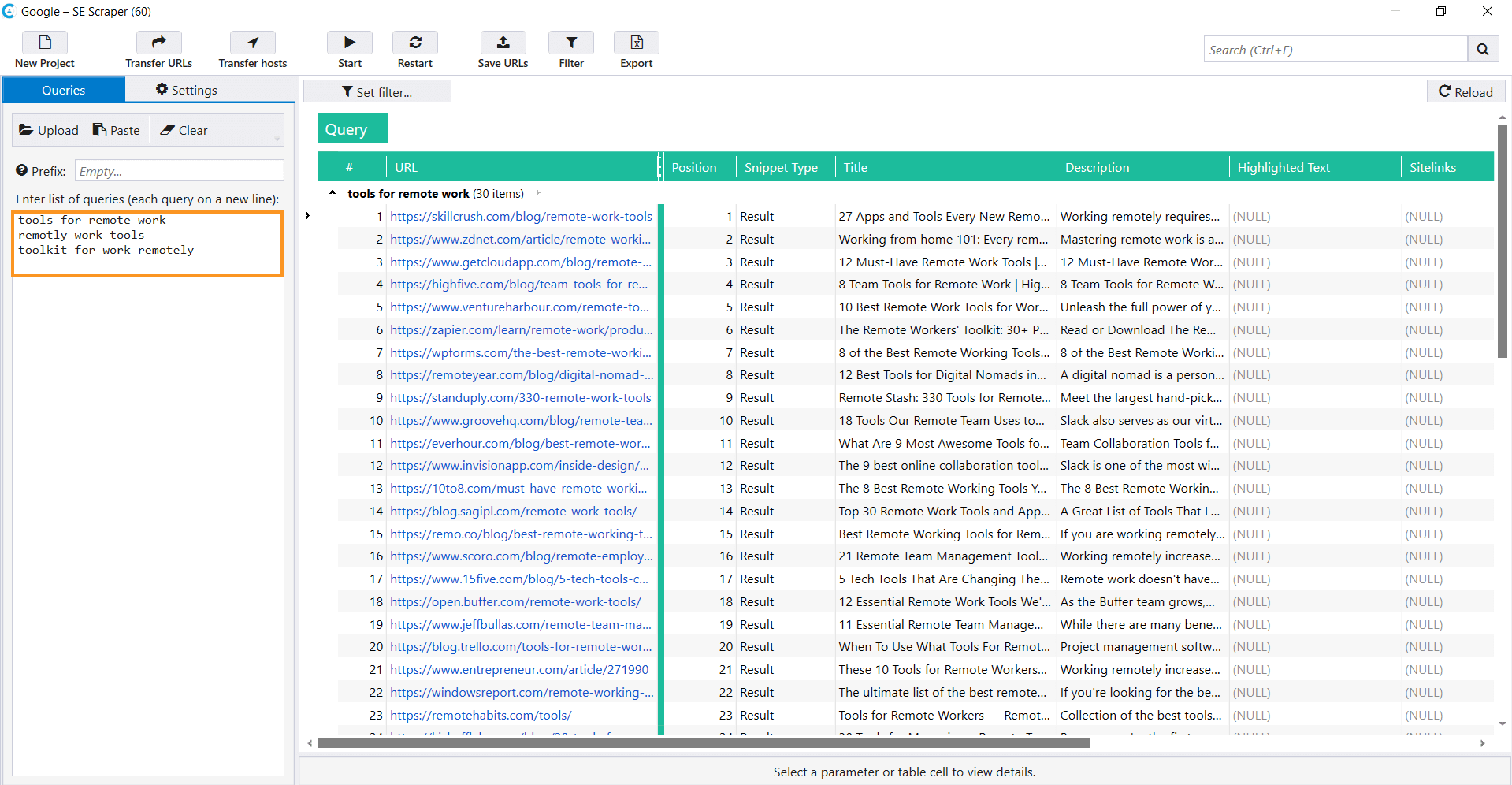
1.‘Comprehensive Guide on Guest Blogging (with Actionable Outreach Tips).’
1.1. Dofollow, Nofollow, Sponsored or UGC: What to Serve Up?
To put it straightforwardly, dofollow links are link builder’s holy grail. Except for mentions and traffic ramp-up, you also receive link equity thus beefing up your own website. As of yet, nofollow links have been actively used in backlink exchange but Google officially announced that they will no longer treat them as ‘rules’, but rather as a ‘hint’. Along with that, they rolled out two new attributes to understand the nature of links better: ‘sponsored’, and ‘UGC’.
So the ‘sponsored’ attribute identifies the links on your site as an advertisement or paid agreement. ‘UGC’, which stands for user-generated content, is recommended in comments and forums. As for ‘UGC’ and ‘sponsored’ attributes, you’re absolutely free to choose whether to use them or not.
2. Size up the Quality of Platform
Before partnering up with any donor website, make sure it’s in tip-top shape. Let’s get down to metrics you need to check over at the stage when you have something to pick from and you have to sift through unwanted or nefarious donors.
2.1. Traffic
Analyze the traffic dynamics and volume to see at what stage the website currently exists: growth, stagnation, or it’s nearing deathbed. Check the volume of traffic in SimilarWeb, Serpstat, or Netpeak Checker.
Pro features in Netpeak Checker also include SERP scraping and export to Google Drive / Sheets 😍
The data may differ, that’s why it’s important to have several services on your side. Apart from that, the volume may vary according to the niche – low indicators don’t always say evil about the website. If for a recipe hub, 300 users per day are zilch, for the store selling, let’s say, flashlights, it’s a good indicator. Depending on the niche you tailor your market funnel.
Also, don’t say ‘meh’ shortly after you see decreasing traffic dynamics. Ponder on the reasons it may happen. Market fluctuations? Seasonality? Probably, the website is not stagnating but making it through its natural period.


With SimilarWeb, you can also check the sources of traffic which you can use as another piece of a jigsaw puzzle. Be reasonable when interpreting these metrics, and always weigh all your clues and insights against the realities of the niche.

So there are six sources of traffic and possible ways of interpreting:
- Search. This source is indeed awesome, and every SEO puts life at stake to reach high visibility in organic search. However, link builders should take a hands-on approach when analyzing the sources of traffic and chew over all possible hazards. So what are the risks if organic search displays the biggest data compared to other sources (given that the breach is significant)? It may say the product has a low level of brand awareness, and all traffic it gets, goes from organic search.
- Referral and social. If referral and social media traffic is towering above other sources – it’s a bad indicator since website donors get all their traffic only from social media, and have no visibility in the search.
- Display Ads. You can draw the same conclusion – the website may be new, it hasn't positioned itself in the search engines yet, or the owners pour all their efforts into paid traffic, neglecting the SEO-honing part.
- Mail. Mail is mail, usually, you won’t see skyrocketing scores in this source of traffic.
- Direct. You have to unscramble the source and origins of this traffic. It doesn’t have any overt negative impact on the website's performance but it’s rather inflexible for further analysis. It might mean that a user types directly into the search bar your website’s address, which is, basically, a nice thing because it means the word is spread, the platform is known, and people are aware of this brand. Or, the traffic can be driven from the click in the bookmark, and so on, and so forth. So deal with it!
2.2. Backlink Profile
It’s an array of all links pointing to the website, which is a kind of identity card for any website. When checking the backlink profile, pay attention to the quality of links, and anchor text. If there are too many commercial words in the anchor text, like ‘buy’, ‘save’, ‘discount’, etc., it’s considered spammy.
Go for the websites with a backlink profile with the growing dynamics – this website will nourish your link over time, it will become sturdy, thereby you have more chances to get ranked.
I'm going to check the backlink profile with Ahrefs and Serpstat. However, there are other tools for backlink analysis that may suit your work more.
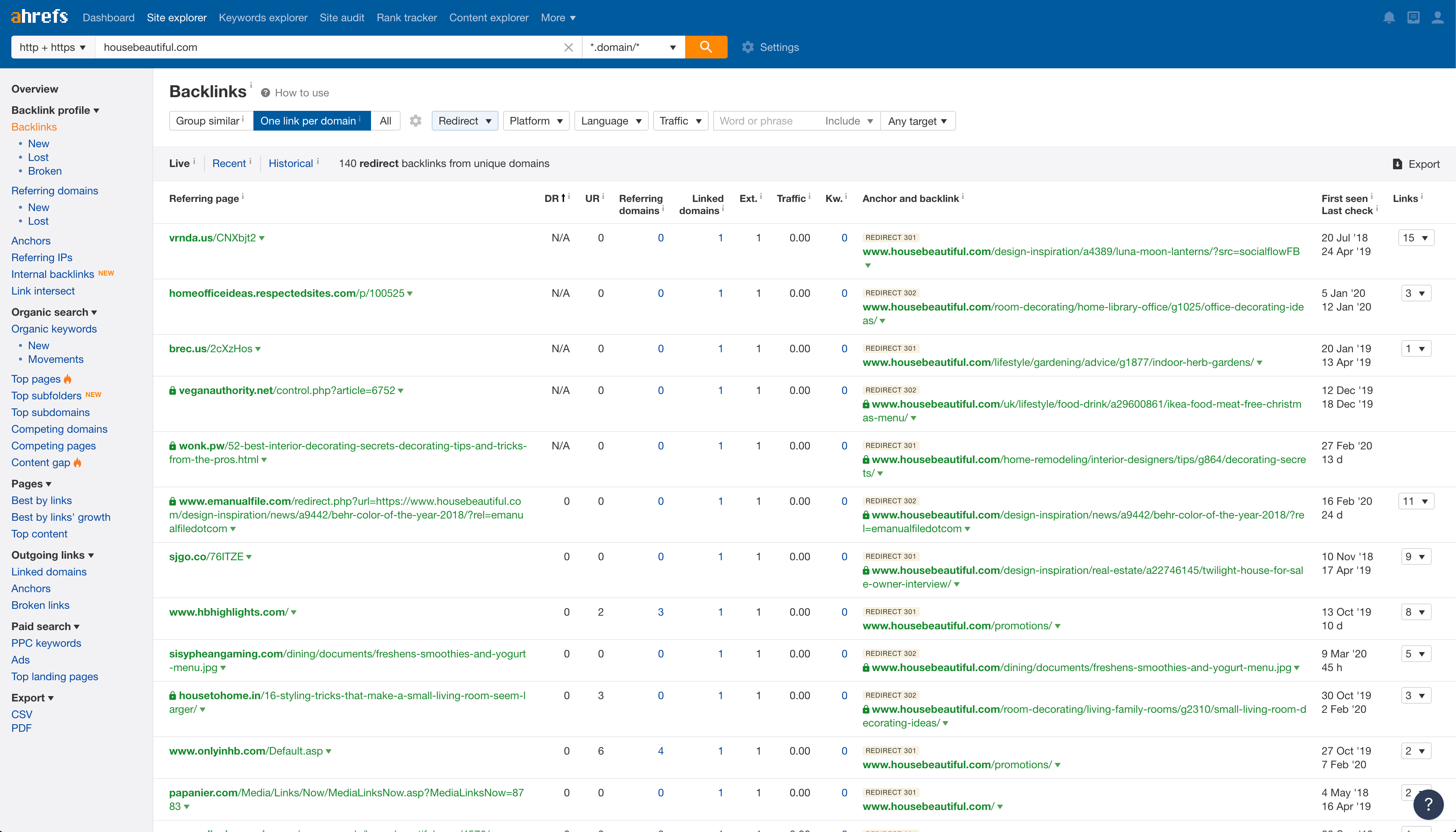
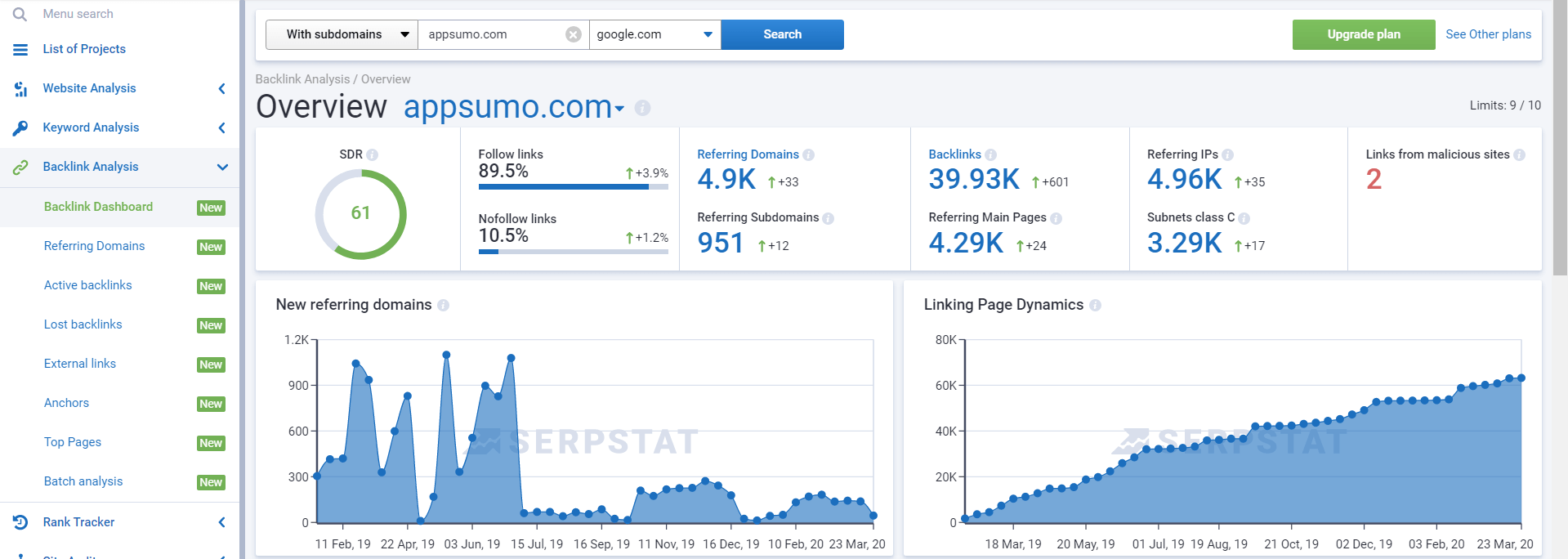
And now take a glimpse at anchor texts. This is the example of a good balance in anchor text types: naked and brand.
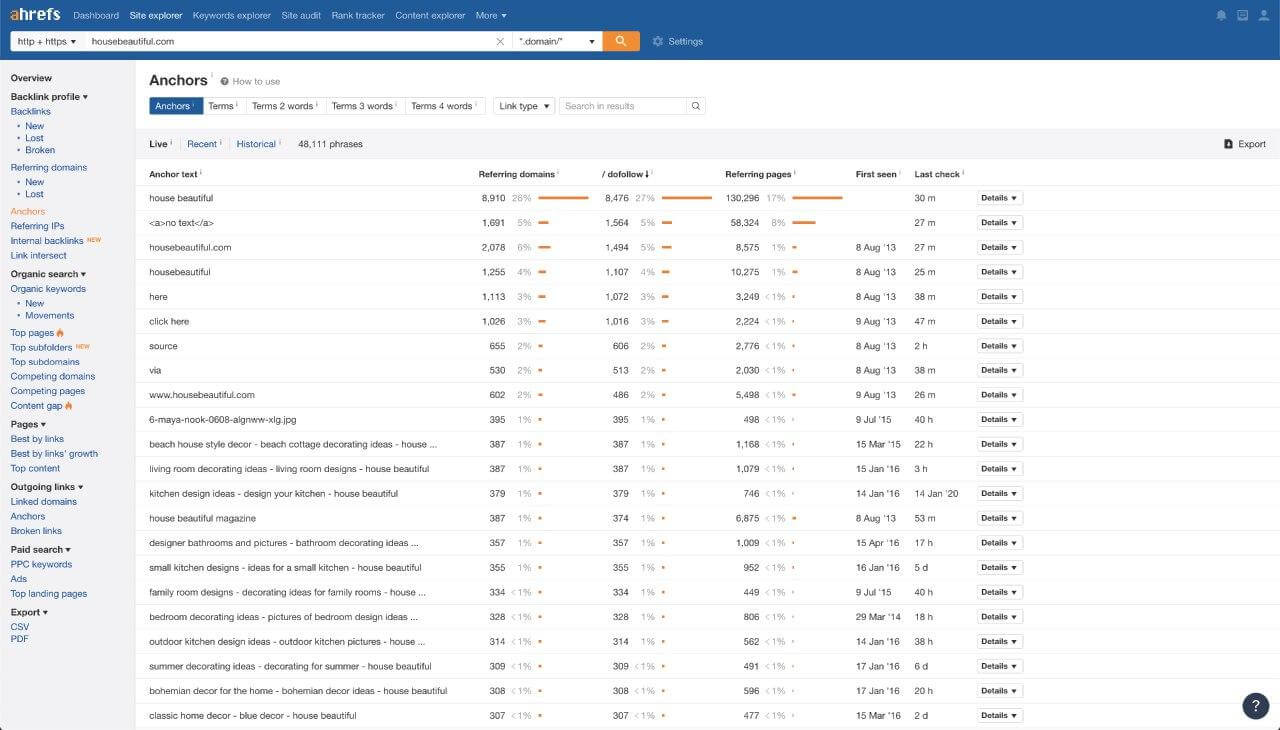
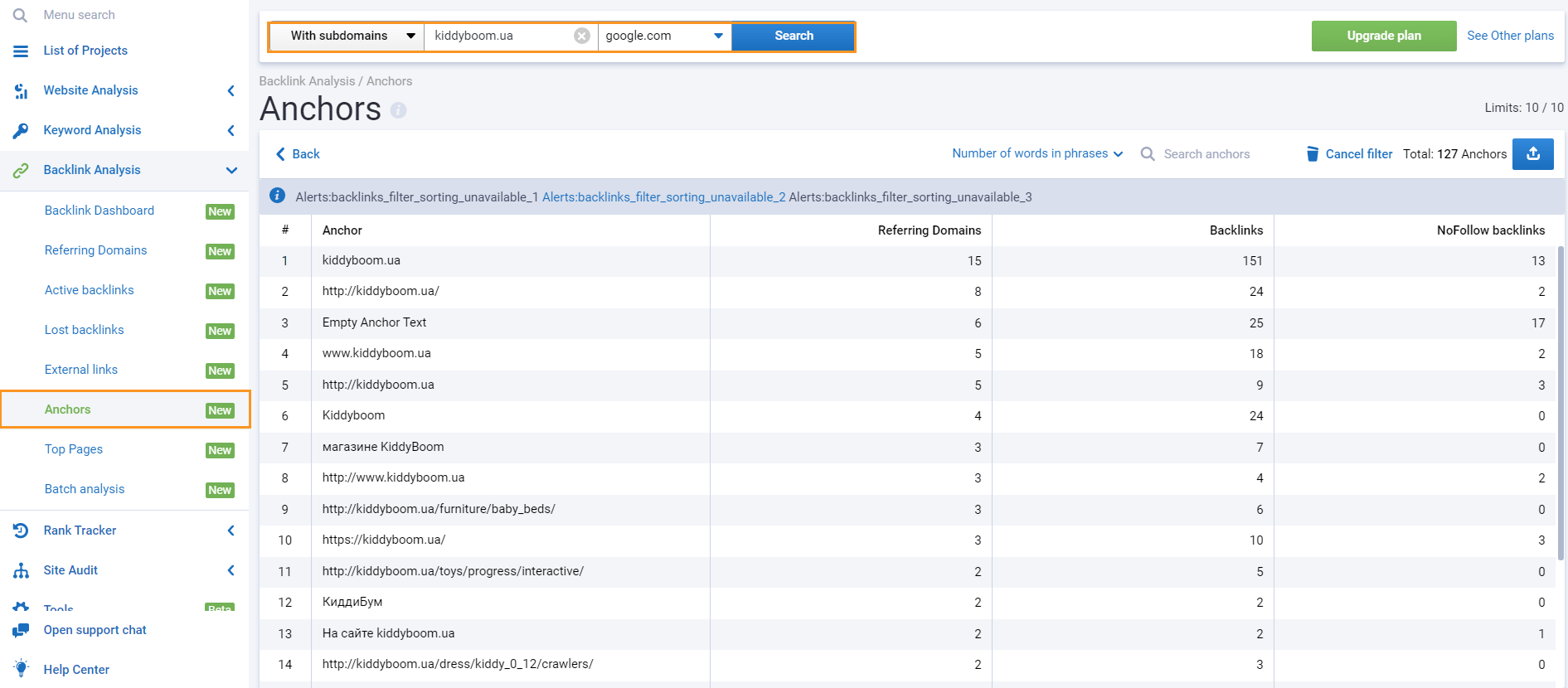
2.3. The Ratio of Outgoing and Incoming links
If there are too many links coming from domain and a shortage or even no links that point to this domain, it can signal that this resource is spammy.
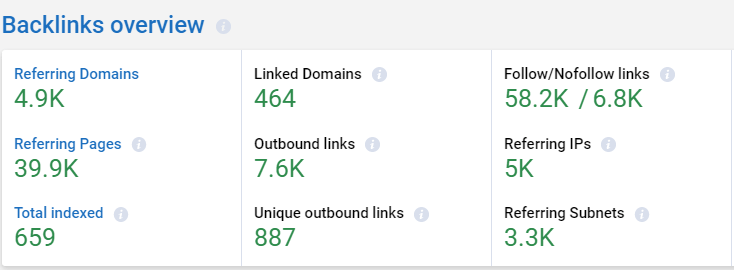
2.4. Age and Authority
Domain Age is a ranking factor for a couple of reasons:
- Google’s end goal is to provide relevant results to all users
- The old domain is already seen and ranked for a group of keywords
- It’s more visible in the SERP
So when all things are equal, opt for older domains since you have more chances to be shown in search.
Whois.net is the first service that comes to mind when you need to check the domain age.
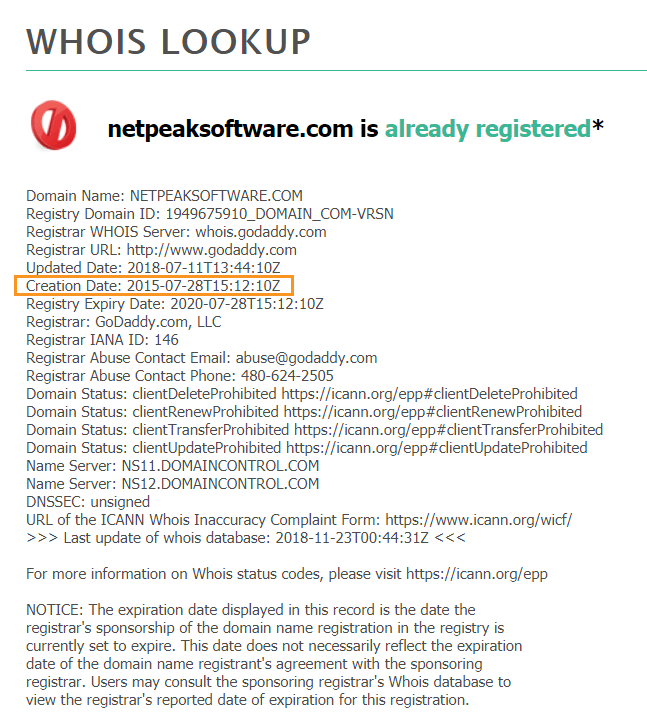
Domain Authority is made up of an aggregate of factors: the number of total links, external links from such an authoritative resource as Wikipedia is an obvious gain, linking root domains, etc. Domains with high DA get more traffic regardless of the position in the SERP. Use this metric to compare websites or track their ‘ranking strength’. Sure thing the best way to check DA is to do it in creator’s service, i.e. Moz.
Anyhow, link-builders don’t survive on the Moz metric alone, there are other services that also calculate data on Domain Authority:
- Ahrefs calls their metric Domain Rating (DR). They say it looks more at the ‘link popularity’ of the website compared to all other websites in the world on a scale from 0 to 100.
- SEMrush has its metric called Authority Score. It measures backlink data (referring domains, follow, nofollow, etc), organic search data, traffic data.
- Majestic uses their ‘flow’ metrics – Citation Flow and Trust Flow.
- Alexa’s metrics are Local Rank and Global Rank. They say that the rank is measured according to daily visits of the website. And the peculiarity of this metric is that it values websites from top to bottom – on the scale from 100 to 0. The lower the number, the better.
So the mechanics of calculations of Domain Authority is pretty complicated, as you can see. Each service has invented its own way, and you choose the one most suitable for your needs.
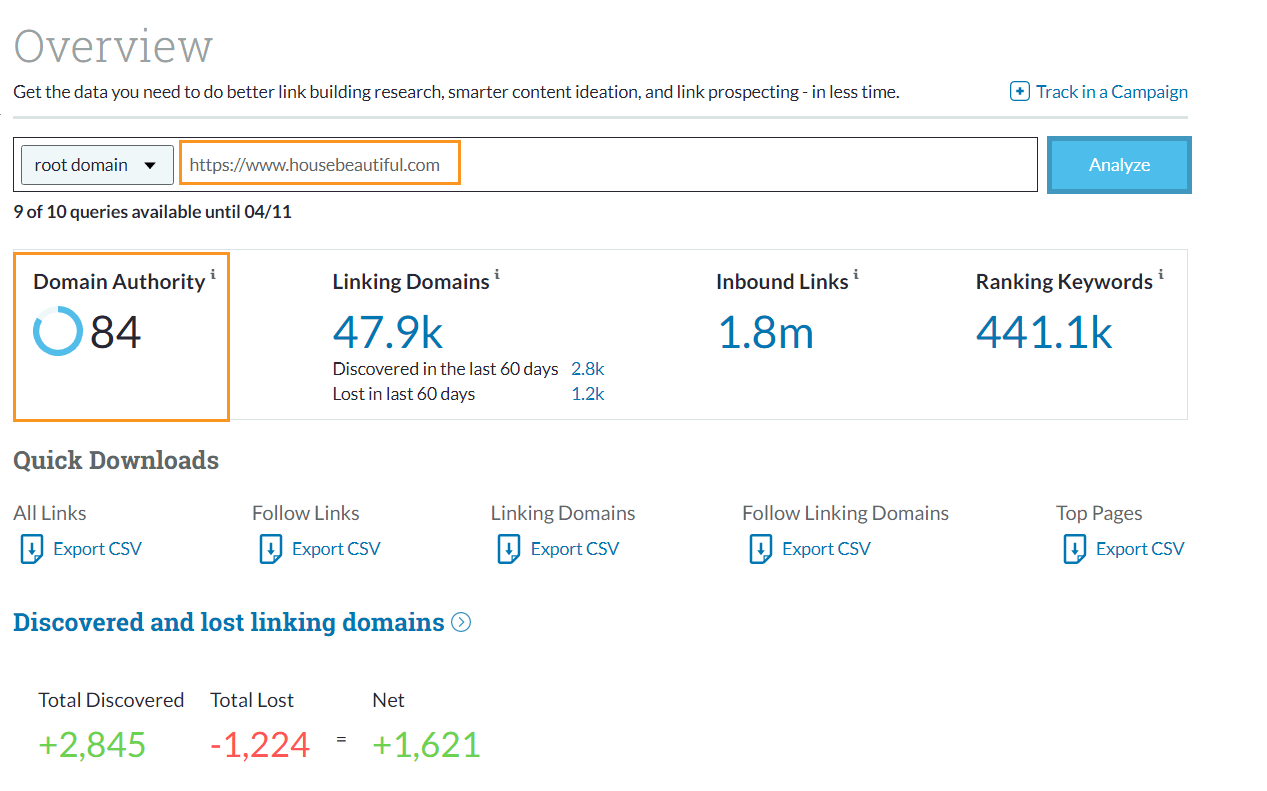
2.6. Number of Pages in Index
Ideally, the whole website is indexed, or the majority of pages are indexed. If the website is partially indexed, it may arise some suspicious question: what if it was sanctioned by Google, or has many SEO issues or duplicate content? To check pages in the index, use the advanced search operator firsthand site:lovekittens.com.
2.7. Visibility in the SERP
When working with visibility in the SERP, compare different periods to analyze the reasons for alterations. Despite the obvious reasons: insufficient SEO optimization, low-quality mobile version, or search engine filters, there might be business-related reasons, such as seasonality, or other niche peculiarities. This is how visibility is shown in Serpstat:

2.8. How Fast, Friendly, and Safe the Website Is
I pulled these metrics into one batch since they often go side-by-side.
- Take the PageSpeed Insights test to analyze the overall page performance and speed loading on both mobile and desktop versions.
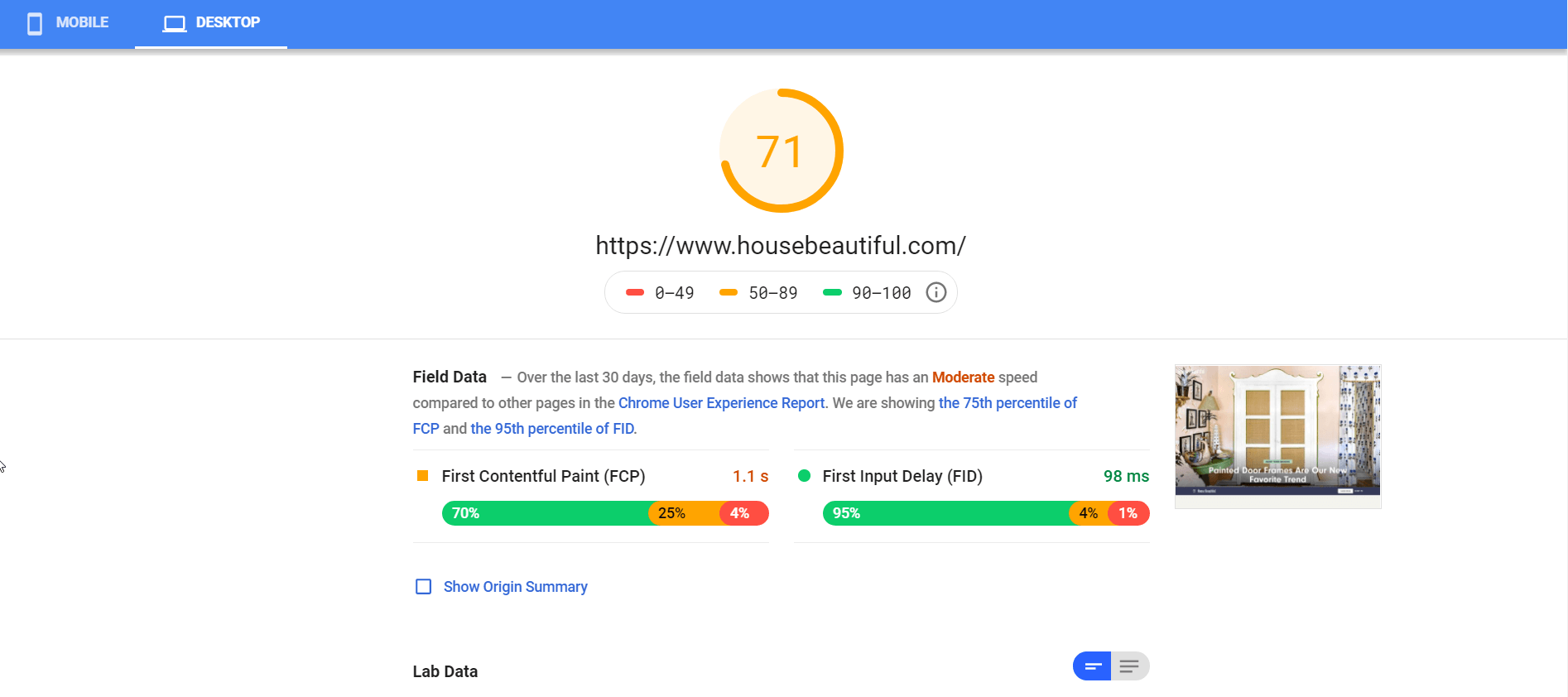
- Mobile-first indexing is already a hackneyed topic. However, many websites still fit only the desktop of the page, significantly lagging behind with responsive design, structured data, AMP, etc. To check the website for mobile-friendliness, take a Mobile-Friendly Test.
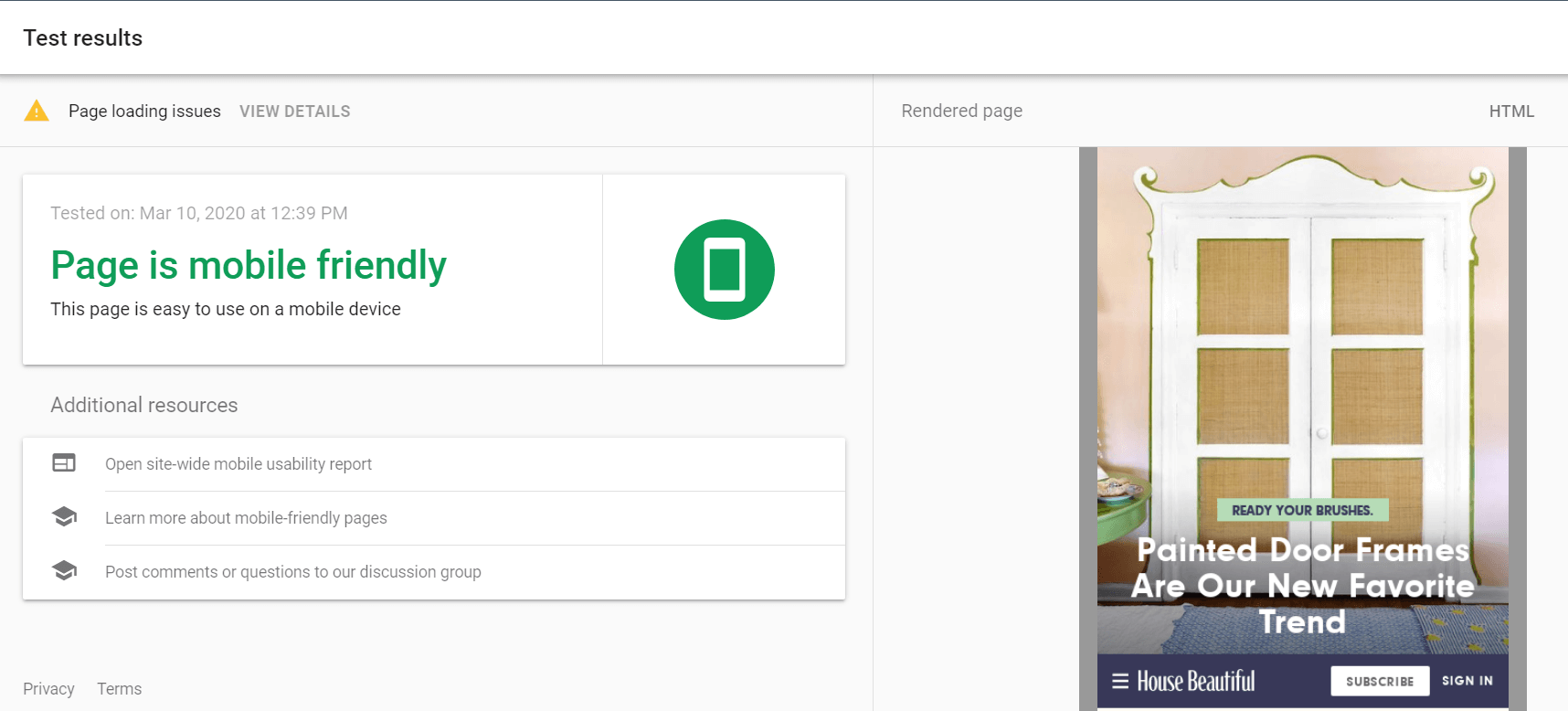
- The website should be safe, come hell or high water. If Google warns you that there's deceptive content ahead (insecure HTTP protocol), it’s the entire reason to shut the page down. Security is a big deal, Google has been pushing on secure browsing for quite a long time.
3. Metrics for Manual Checks
These are metrics that you usually check manually with hard-eye and sound judgment:
- Contextual matching. I’m not going to chase my tail. Yes, it’s an important factor that you'd rather consider when choosing your donor, but always remember about wicked tricks of the contextual loop. Break the limits of thematic forums, go to news hubs, Q&A platforms (like Quora and Reddit), chip in your brand, be bold 😉
- Updates. Check out how frequently the platform updates. Also, pay tribute to the quality of these updates, since it may burst at the seams with regular updates, but they leave a lot to be desired.
- Behavioral factors. If there are updates but no bustling activity (or at least it is an imitation), question yourself what goals you pursue when leaving a backlink there. Lack of any shares in social media could also be a dead giveaway.
4. How to Check Quality of the Donor Website with Netpeak Checker
Consistency and the automated process can sharpen up any link building activity. It’s hard to check each website manually in different services, especially if you have hundreds and thousands of link donors to vet. Moz, Serpstat, Ahrefs, Majestic, Whois, SEMrush, SimilarWeb and many other services are already integrated in Netpeak Checker, so you can conduct the analysis of all metrics in one tool.
- Launch Netpeak Checker and select necessary parameters in a sidebar:
- Ahrefs* → Host parameters → Domain Rating
- Serpstat* → SE Traffic, Visibility
- Majestic* → Host parameters → Trust Flow, Citation Flow
- SimilarWeb* → Total Visits. If you need detailed analysis on the channels, you can choose additional parameters: Direct, Referral, Organic, or Paid traffic.
- Moz → Root Domain parameters → Domain Authority
- SEMrush* → Root Domain parameters → Authority Score
- Alexa → Global Rank, Local Rank
- Whois → Creation Date
- Google PageSpeed Insights → Mobile Score
- Google Mobile-Friendly Test → Is Mobile-Friendly
- Google Safe Browsing → Is Safe
- Facebook → Reactions, Shares, Comments (optional parameter, suits if you want to check the engagement with the content in social media)
- Add the list of URLs, and start crawling. All the results are conveniently displayed in a single table.
- Choose the right platform, don’t try to box yourself into the contextually related website – be relevant but expand the borders of your website theme. Choose not to be cagey!
- Use the right links attribute. Now there are three of them, make the right pick: UGC, sponsored, nofollow. And, of course, aim for dofollow links since they still pass link equity to your website.
- Size up the quality of the donor domain. It’s the place where you should take a shrewd approach to analyze the metrics and bounce them off the niche, season, and market fluctuations.
- Use automated tools to fire up the daily grind: Ahrefs, SimilarWeb, Moz, Serpstat, or just aggregate all the data from these in Netpeak Checker.
*You’ll need a subscription to these services to get API-keys in order to get data from them in Netpeak Checker.
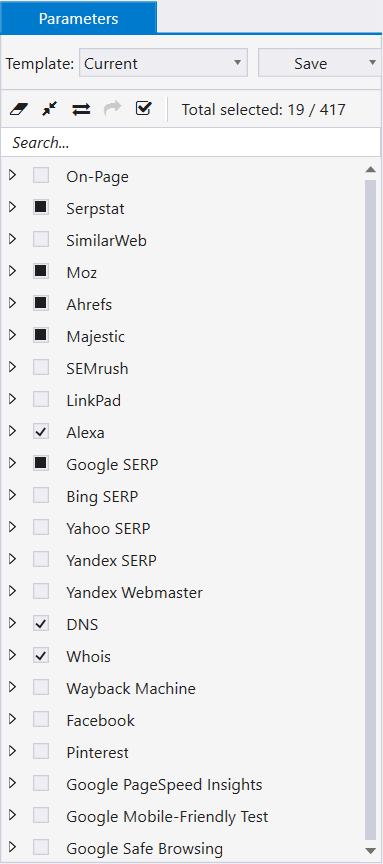
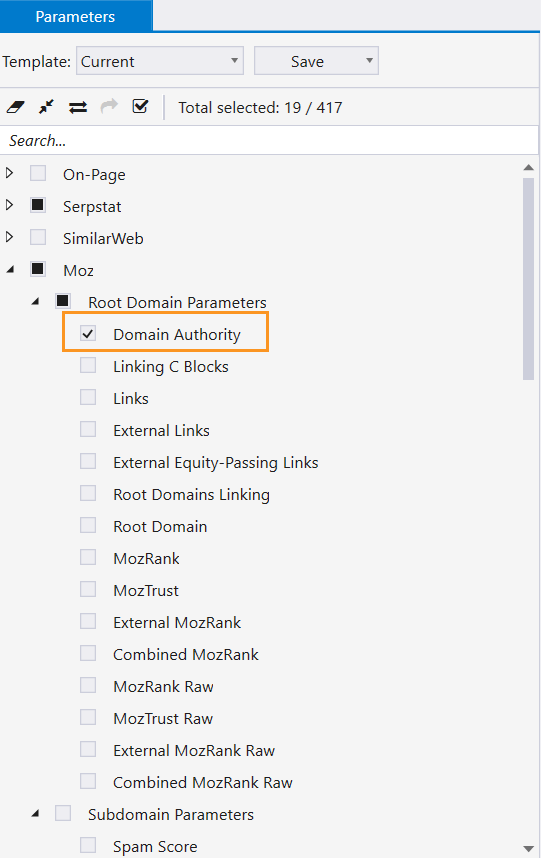
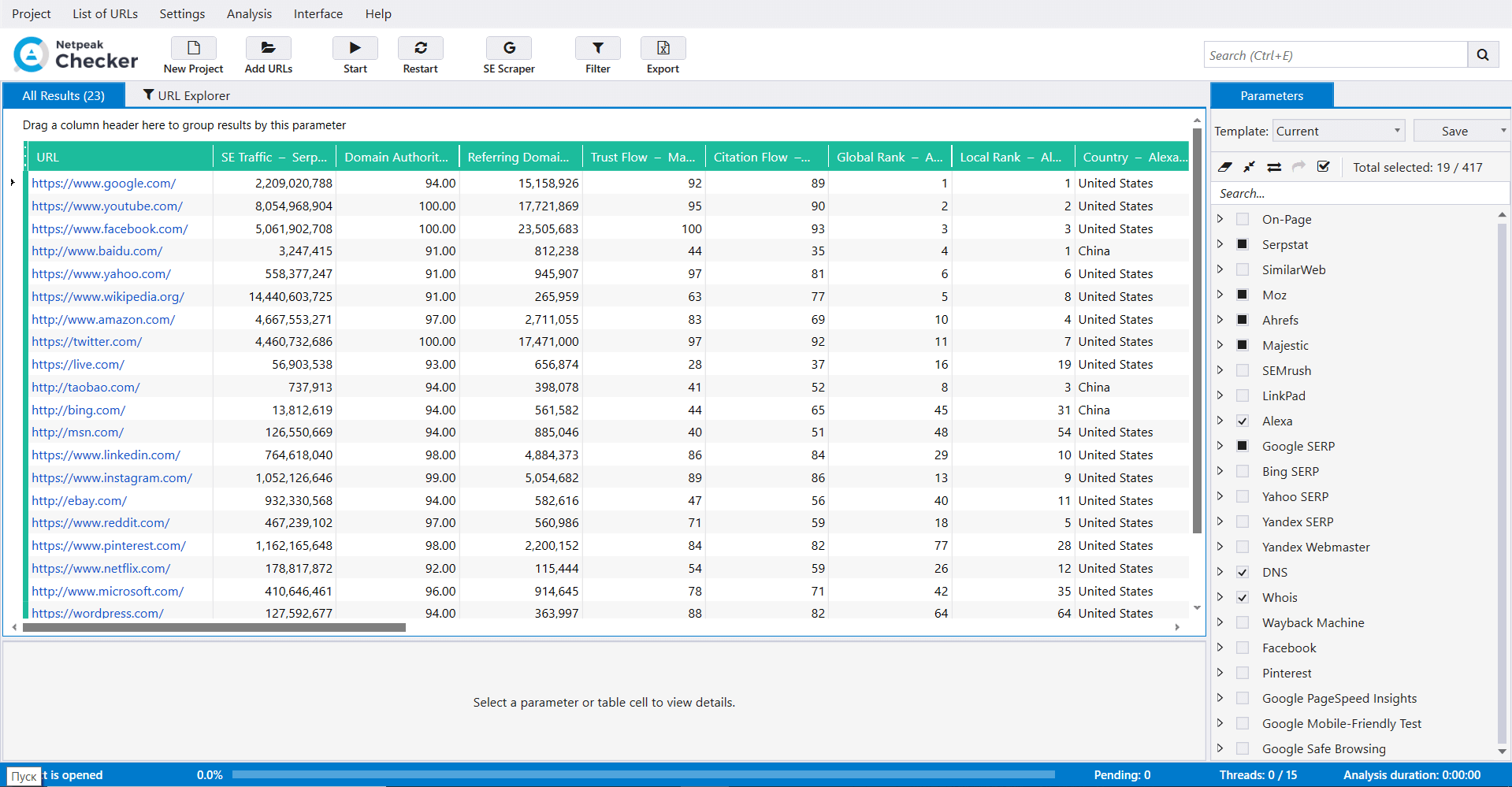
Wrapping It Up
Link building is a core drive in SEO optimization. Sometimes it feels like watching the grass grow but it brings tangible results in the end. So, let’s polish on the main takeaways:



